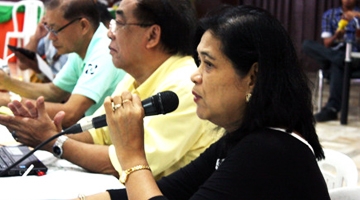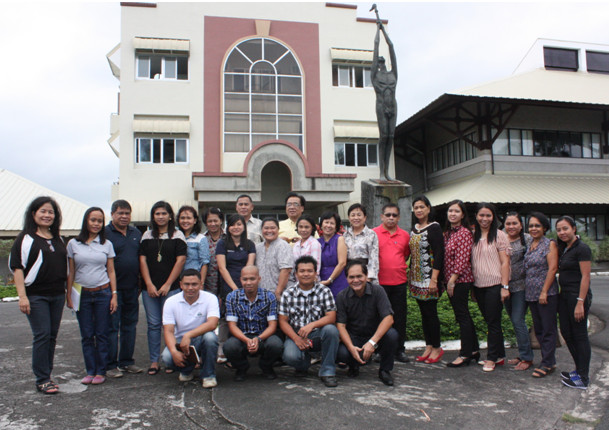 Researchers from three key implementing agencies gathered at the PCAARRD Headquarters recently for a review of projects under the National Banana R&D Program.
Researchers from three key implementing agencies gathered at the PCAARRD Headquarters recently for a review of projects under the National Banana R&D Program.
The review served as a venue for presenting the status of on-going projects and mapping out of future activities to achieve program goals.
Commenting on the project on tissue culture propagation protocol using male bud/floral apex of banana, the review panel emphasized the need for the project team to identify the causes of browning in micropropagating floral apex or male bud. They also suggested that its result be considered in their tissue culture protocol optimization.
The project is a University of Southern Mindanao (USM)-led R&D initiative. Currently, the performance of floral apex is being evaluated vis-à-vis the shoot tip using different treatment combinations of modified medium.
Dr. Avelino D. Raymundo of the University of the Philippines Los Baños (UPLB) led the external review panel with Dr. Agustin B. Molina, Jr. of Bioversity International and Dr. Consorcia E. Reaño of UPLB as members. Also joining them was Dr. Democrito Z. Magpantay of the Technology Transfer and Promotion Division of PCAARRD.
USM is also implementing the project on enhancing productivity by reducing major diseases such as banana bunchy top virus (BBTV), Fusarium wilt, and “bugtok” in Region 12.
For the said project, the team was advised to document thoroughly the practices of the farmer-cooperators to know whether the incidence of pests and diseases was due to non-application of proper cultural management practices or due to other factors. This will also serve as basis in the formulation of the package of technology.
Dr. Olivia P. Damasco of UPLB presented the highlights of the project on the multi-location performance of a new BBTV-resistant lakatan. Its major activities from April to November 2013 included the mass propagation of lakatan mutant lines, field establishment of multi-location evaluation and demonstration trials, and monitoring for BBTV disease incidence in trial sites.
The evaluators saw the need for the researchers to record the incidence and prevalence of BBTV in the area and to study its nature to determine molecular diversity. They also suggested that the area be disturbed to cause the transfer of the aphids to other plants, thereby ensuring uniformity of BBTV infection in the experimental sites.
Also reviewed during the activity was the three-year program: “S&T management approaches against Fusarium wilt on ‘cavendish’ in Mindanao,” another PCAARRD initiative. Under the program are three projects which focus on reducing the spread and incidence of Fusarium wilt in Mindanao.
 The first project focuses on evaluating the performance of seven giant cavendish tissue-culture variant (GCTCV) somaclones in Fusarium wilt (Foc) tropical race 4(TR4) infested soils. The team reported the establishment of six field sites using GCTCV somaclones, ‘Grand Naine’, and lakatan.
The first project focuses on evaluating the performance of seven giant cavendish tissue-culture variant (GCTCV) somaclones in Fusarium wilt (Foc) tropical race 4(TR4) infested soils. The team reported the establishment of six field sites using GCTCV somaclones, ‘Grand Naine’, and lakatan.
Future activities of the research team include documentation of market acceptability of the selected resistant somaclones, mass propagation of selected varieties for further evaluation, and production of information, education and communication materials on management strategies against Fusarium wilt.
The second project, on the other hand, focuses on the development of biological control strategies against Foc TR4 under greenhouse and field conditions. Initial results of the greenhouse experiments suggest that early application of MykoVAM, EMAS, and Trichoderma harzianum prior to field planting has the potential to protect the growth of Grane Naine in a Foc-infested field.
The third project aims to map out the distribution of Fusarium wilt incidence in Mindanao and identify the Foc raves through polymerase chain reaction. Foc-infected plants from major banana-growing areas in Mindanao were already collected by the team for race analysis. The review panel suggested that the project leader prioritize analysis of samples collected outside the Davao Region.
